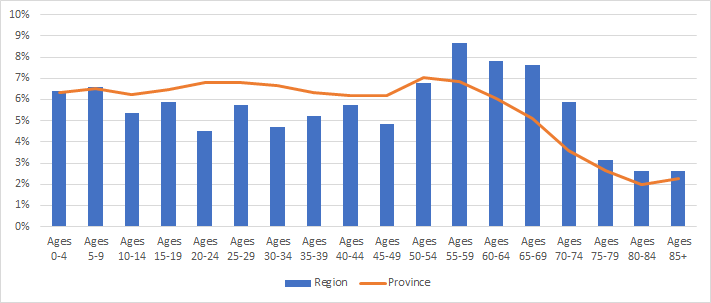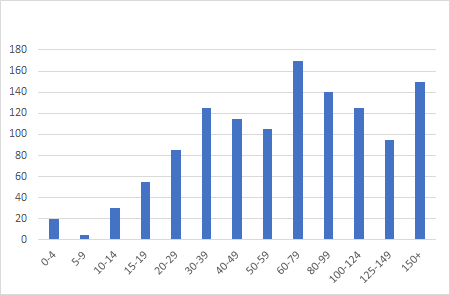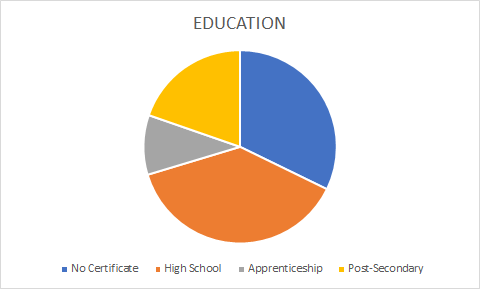REGIONAL DEMOGRAPHICS
*All information has been sourced using Statistics Canada: 2016 Census
POPULATION |
According to the 2016 census, the region has a population of 2,891 people. In the last 2011 and 2016 census, the population has declined by 140 people, an average decline rate of .92% per year from 2011 to 2016.
The largest population of the region is the age group between 55 to 69 years old, and the least populated age group is between 80+ years old. 60% of the population are in the working age group between 15 to 64 years old, while 18% make up the younger population which will be a part of labour force in less than 2 decades. This is an overview of the region, but as seen in the line graph, each Municipality has it's own varying population of age groups.

The Ages Chart (above) illustrates the region has more people by proportion than the Manitoba average in the 55 to 85+age categories. The proportion of population by age has decreased and is less than the Manitoba average in every other age category.
MARITAL STATUS |
 A majority of the population are married, making up 60 per cent of the population of the region. Having a predominantly married population is highy beneficial to any area, as married couples usually bring in larger incomes and a higher net worth.
A majority of the population are married, making up 60 per cent of the population of the region. Having a predominantly married population is highy beneficial to any area, as married couples usually bring in larger incomes and a higher net worth.
They also help boost the community's liveliness and labour force, as they are most likely to bear children and create the best economic conditions for them. Furthermore, this group also spends more compared to most of their counterparts.
The marital status is another term for civil status, or person's current relationship with a partner.
HOUSEHOLD INCOME |
The Household Income chart shows how many households in the region fall in each of the income brackets as they are presented by Statistics Canada.

HOUSEHOLD BY SIZE |

LEVELS OF EDUCATION |
  |
Regionally, 745 people have only completed a high school education and 385 people, 20% of the population, attended some form of post secondary education. 630 people in the region have no certifications of any kind, which represents 38%. 195 people in the region, roughly 10%, have taken or are currently enrolled in an apprenticeship program. Collegiate Education Our region is serviced by the Southwest Horizon School Division and offers three Collegiate schools offering grades from Kindergarten to Grade 12. Each school offers mandatory classes, but each one offers it's own electives. Secondary Education The region is in proximity to a number of Colleges and Universities within a 500 km radius. Some examples of these include: Brandon University, University of Winnipeg, Assiniboine Community College, Minot State University, University of Regina | |
 | ||